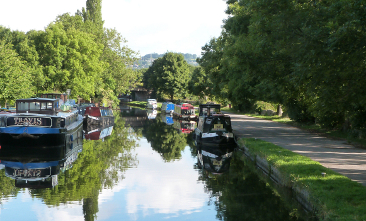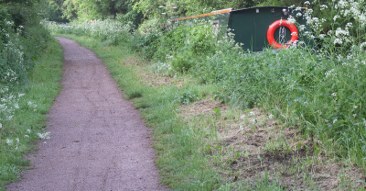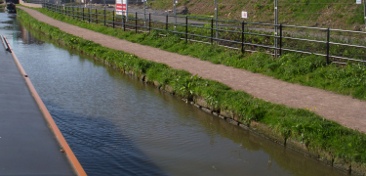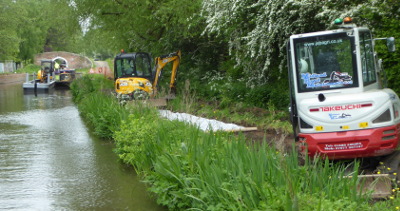Keeping towpaths open, safe and accessible
THE Canal & River Trust tell the nation’s canals are attracting record numbers of visitors and more people using towpaths than ever before.
So yesterday, Thursday, a policy document has been published setting out how these vital, historic and typically narrow routes can be sustainably used, managed, and made more accessible for the benefit of all, the trust tells and continues:
 2,000 miles of towpaths
2,000 miles of towpaths
Alongside the canals’ core use for boating and angling, ‘Towpaths for Everyone’ outlines the key role the Canal & River Trust’s 2,000 miles of towpaths play in public life, including as part of a nationwide active travel network. Developed in partnership with representatives of the users of the canal system together with Active Travel England, Sustrans and Sport England, the policy sets out how the trust, partners and towpath visitors can all play their part in ensuring towpaths remain the nation’s greatest linear green spaces, providing vital access to nature through towns and cities and links to the countryside.
 To help ensure people share the often limited towpath space and that they remain safe and welcoming places for all, Towpaths for Everyone has a code of conduct for visitors. This includes cyclists and runners respecting the slowest moving people on the towpath as well as those accessing the water space, such as boaters and anglers.
To help ensure people share the often limited towpath space and that they remain safe and welcoming places for all, Towpaths for Everyone has a code of conduct for visitors. This includes cyclists and runners respecting the slowest moving people on the towpath as well as those accessing the water space, such as boaters and anglers.
Heather Clarke, Director at the Canal & River Trust, comments:
800 million visits
“Whilst our historic canals are still navigated by boats much as they were at the height of the Industrial Revolution, today’s canals and their towpaths have also been repurposed for modern society. They are increasingly popular spaces for walking, running, cycling, and angling as well as serving boaters and those accessing other on-water activities such as canoeing and paddle-boarding. Last year saw over 800 million visits to our canals, with people experiencing the daily mental and physical benefits of spending time in nature and by the water.
“With towpaths more popular than at any time in history, we face challenges in balancing the needs of all the people who use them, whilst protecting their special waterway character, heritage and environment. As our ageing network faces increased pressures from government funding cuts and climate change-driven damage, it is more important than ever to secure investment from third parties to keep these much-loved spaces open and accessible.”
 As well as setting out the trust’s towpath design principles, the charity’s policy document includes examples of how it works with partners to access third party funding for improvement programmes that make the towpaths easier and safer to use year-round. This partnership working has enabled the trust to upgrade a quarter of the national towpath network (over 500 miles) in the past decade. The policy lays the groundwork for continuing this transformative work, setting out the value of the investment to partners such as local authorities and Sustrans, as well as to wider society, with the charity’s canals bringing a £1.1 billion cost saving each year to the NHS due to people being active along its waterways and towpaths.
As well as setting out the trust’s towpath design principles, the charity’s policy document includes examples of how it works with partners to access third party funding for improvement programmes that make the towpaths easier and safer to use year-round. This partnership working has enabled the trust to upgrade a quarter of the national towpath network (over 500 miles) in the past decade. The policy lays the groundwork for continuing this transformative work, setting out the value of the investment to partners such as local authorities and Sustrans, as well as to wider society, with the charity’s canals bringing a £1.1 billion cost saving each year to the NHS due to people being active along its waterways and towpaths.
The policy also builds on the charity’s experience of previous towpath schemes by helping to ensure that future improvements deliver benefits for a wide range of canal and towpath users, including use of the navigation and creating more accessible moorings.

“Towpaths were once industrial routes used to pull boats by horse but, after the decline of waterborne freight, became forgotten and often derelict spaces. Now, thanks to the work of our charity, the towpaths are open, accessible places to spend time in nature, and more people are feeling the benefits of being by water than ever before. Our canal towpaths are perfectly placed to play a pivotal role in meeting the Government’s target to give everyone access to local quality blue and green space. Working with partners to upgrade towpaths to reflect the diverse ways they are used today will ensure they are more accessible and meet the needs of everyone who uses them.”
